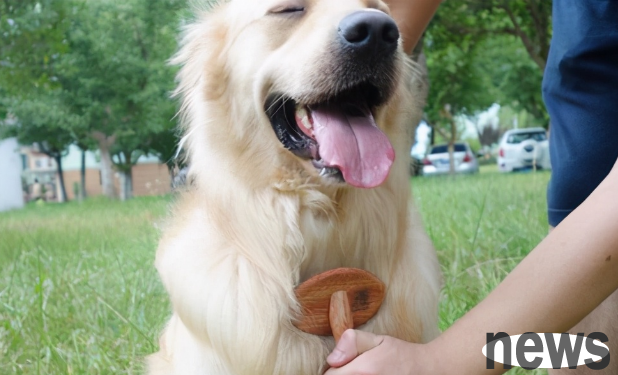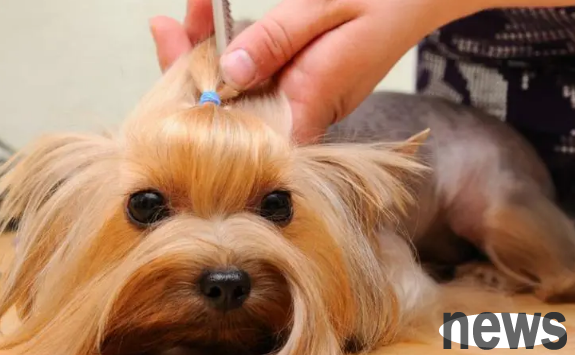Spring is here, and it is the annual season for dogs to change their hair. Faced with the overwhelming dog hair, are the shit pickers ready to fight against dog hair? Have you been breathing every day recently and your nose is full of dog hair? I to...
Spring is here, and it is the annual season for dogs to change their hair. Faced with the overwhelming dog hair, are the shit pickers ready to fight against dog hair?

Have you been breathing every day recently and your nose is full of dog hair? I touched the dog with my hands full of hair falling off and my head was big.
In fact, these hairs were once the hairy ones. In order to survive the cold winter, children evolved into seasonal transformation constitutions, and they would become hairy and pass the winter in autumn. To survive the hot summer, hair removal will also be performed in the spring.
Faced with the scattered dog hair that can never be cleaned up, how should parents reduce their hair loss? Let's take some measures to reduce the phenomenon of hair loss in dogs~
01. It's important to choose the right tool
Combs need not be said more, everyone knows how important it is, although some brushes are suitable for all types of hair. But short-haired dogs have combs that suit them, and long-haired dogs are the most important thing to choose from.
is suitable for all types of hair, a universal brush that can be used every day for all types of hair. It should be noted that when choosing, long-haired dogs are more suitable for long bristles, short-haired dogs are more suitable for short bristles, and dogs with hard hair are more suitable for hard bristles.
This brush has wire bristles, which can effectively remove hair that has fallen off on dogs. It is a very commonly used comb. Straight-haired dogs can comb the hair smoothly. Poodles have the effect of pulling hair, but it is not easy to untie larger hair knots.
The main function of combing is to comb off floating hair and untie the hair knots. It is very suitable for large dogs that are prone to hair loss. Combing the hair every day can effectively reduce the situation where hair loss is everywhere. Usually used in dogs with longer hair.
The tool used to remove tangled hair, with minimal damage. Suitable for knotted poodles.
is actually a brush designed in the form of a glove that can be slided into a dog with short or medium length hair in his hand.
02. Establish a regular daily hair combing plan
Try to comb your dog's hair every day to minimize hair loss. Choosing a time your dog will behave calm and willing to cooperate (such as after a night walk) and do your best to keep it and help your pet develop this habit.
Pick a combing location that is comfortable for you and your pet and lay a sheet or blanket in the area to catch the drifting hair.
Combing is the best way to reduce hair loss. Rather than letting the hair scatter around the house, capture it in a comb and dispose of it properly.
03. Take a regular bath for the dog. If the steps are correct, it can actually effectively reduce hair loss. It should be noted that the frequency should not be too high. It is recommended to once a week in summer and once a month in winter.
Step 1: Comb your hair before taking a bath. Generally speaking, it is best to comb your hair before bathing your dog, which can remove the clumping hair that will make it difficult to use shampoo. Start combing the pet's hair from its hind legs and move upwards. Comb the hair against the direction of its hair growth to ensure that water penetrates its hair more easily. Combing before bathing can also remove dead or shed hair, which can be troublesome when bathing.
Step 2: Choose the right shampoo. When bathing your pet, choose a shampoo designed for your dog. Regular shampoos are more irritating than dog shampoos, because dog shampoos are designed according to the dog's specific pH. Human-used shampoo will wash away protective, essential oils from dogs’ hair, exposing them to bacteria and parasites. To further protect your dog’s sensitive skin, choose a dog shampoo without adding artificial fragrances or pigments.
Step 3: Start taking a bath. Lead the dog into the shower and let it stand on a towel or non-slip pad on the shower floor. From the back to the chest wet and wash the dog's hair, blistering gently. If your dog has thick hair, try using a brush instead of fingers and brushing the shampoo evenly throughout its hair.
Step 4: Rinse the hair. Rinse off shampoo from your dog's hair with a removable shower head or bowl. Make sure to thoroughly wash away any residue, which may cause skin irritation if left on the skin surface. Be careful to avoid water entering your dog's eyes when rinsing.
Step 5: Blow dry the dog. Gently squeeze out excess moisture from the dog's hair, let the dog shake off the excess moisture, and then dry with a large towel. Turn the hair dryer to a low temperature setting and gently blow dry the dog to remove excess moisture. Keep the distance between the hair dryer and the dog to prevent overheating or messing up its hair.

04. Keep your dog healthy
① Visit your veterinarian
If your dog has too much hair, please visit your veterinarian to troubleshoot health problems. Veterinarians can conduct tests to determine whether there are medical problems such as insufficient diet, hormonal imbalances or parasites that cause your pet to lose hair and treat it accordingly.
② Check whether the dog has fleas
Observe whether the dog has signs of fleas, pay attention to whether it has scratching and itchy skin, and check whether there are small dark brown to black insects in its hair.
Sometimes these insects can be seen moving on the pet's skin. When grooming your dog, use a fine-toothed comb to comb the hair close to the skin and slap the caught fleas onto a piece of white paper to make them visible. If fleas are found, take your pet to the veterinarian immediately and find out the best treatment.
05. Feeding high-quality food
Food intolerance or allergies can cause various skin problems of dogs and affect their hair health. Conventional commercial dog foods are usually made with low-quality ingredients such as corn, soy and low-grade meat.
Please buy dog food with the least processed level, or use whole food to supplement your dog's daily diet to provide more balanced nutrition.
You can also try to supplement your dog with essential fatty acids, such as omega-3 and omega-6 oils, which can improve the skin and hair condition of your dog and may help reduce hair loss.
What bad intentions can a dog have? They just can't control themselves from shedding hair. So how can we "safely" pass the hair change period? In fact, in general, it is still one sentence: comb your hair frequently.
Let's build a unity and warm moment of combing with your dog~